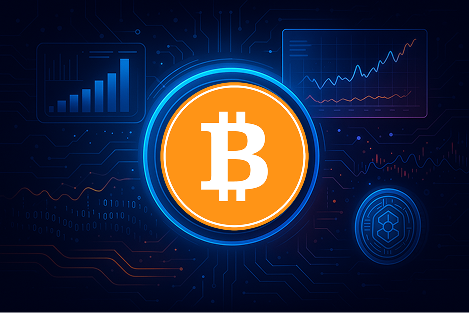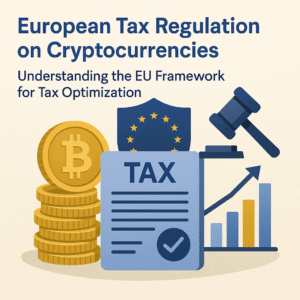Hashgard Price: Crypto Analysis, Functionality and Token Utility

Learn how Hashgard works, its GARD token use cases, DeFi potential, and value in digital asset management.
Hashgard is a blockchain platform designed for digital asset management, with a focus on decentralized finance (DeFi) and on-chain governance. By combining transparency, smart contract automation, and security through Tendermint consensus, Hashgard aims to structure a complete DeFi ecosystem. This article explains its technical foundations, GARD token use cases, price drivers, and how to buy or invest in Hashgard with clarity.
Key takeaways
- Short-term volatility: sensitive to DeFi announcements and Cosmos ecosystem dynamics
- Key influencing factors: cross-chain compatibility, regulation, DAO adoption
- Long-term growth potential: strong if DeFi develops around interoperable solutions
Introduction to Hashgard (GARD)
Symbol: GARD Category: Blockchain infrastructure / Decentralized Finance (DeFi) Main function: Decentralized management of digital assets through a public interoperable blockchain Project Objective: Hashgard aims to provide a comprehensive blockchain solution for digital asset management, combining security, transparency, and automation through smart contracts. Launched in May 2018, Hashgard is a distributed digital asset management protocol designed to serve both institutional and retail investors. It offers a full suite of functional modules, including smart contracts tailored for asset management, enabling issuance, custody, settlement, audit, process control, and arbitration of decentralized assets. The project was initiated by Charlie Xu, Strategic Director at Fenbushi Capital and Managing Partner of BKFUND, and Tom Huang, co-founder of BKFUND. Hashgard raised funds from over 80 institutional investors including Fenbushi Capital, BKFUND, Frees Fund, JRR Crypto, 8 Decimal Capital, Gobi Partners, and the VeChain Foundation. The native token GARD is used for transaction fees, network governance, and as an incentive mechanism for participants.How Hashgard Works
Hashgard is a blockchain platform for decentralized digital asset management. It combines hybrid consensus mechanisms and advanced features to deliver a complete DeFi solution.Technology Used
- Blockchain / Consensus type: Hashgard uses a hybrid consensus combining Proof of Work (PoW) and Proof of Stake (PoS), strengthening network security and decentralization.
- EVM Compatibility: Compatible with the Ethereum Virtual Machine (EVM), enabling the deployment of Ethereum-based dApps on Hashgard.
- Technical features:
- Cross-chain interoperability via bridges
- Oracles for integrating external data
- Potential Layer 2 compatibility for scalability
GARD Token Utility
- Transaction fees
- On-chain governance (community voting)
- Staking for network security
- Incentives for ecosystem participants
History and Project Creation
Hashgard was launched in March 2018 in Shanghai, China. It was incubated by Fenbushi Capital, a major blockchain venture capital firm.Timeline
- March 2018: official launch
- May 2018: $10M raised from 50+ investors
- July 2018: GARD token community airdrop
- December 2018: testnet launched
- August 2020: mainnet launched
Founders and Team
Founders
- Charlie Xu: blockchain strategist, Director at Fenbushi Capital
- Tom Huang: financial analyst and BKFUND co-founder
- Frank Yang: CTO, former software development lead at ZTE
Partnerships
Hashgard collaborates with Irisnet and Scry.Info to enhance cross-chain and oracle functionality.What Makes [Nom cryptomonnaie] Unique?
Hashgard Features: Use Cases, Value Proposition and Positioning
Innovative Use Cases
- Tokenized asset management
- DeFi lending, borrowing, and DEX operations
- Tokenization of real-world assets (stocks, real estate)
- Community governance via voting
Unique Value Proposition
- Integrated and interoperable DeFi platform
- Simplified access to digital asset management tools
- EVM compatibility and multichain architecture

Implicit Comparison
Unlike Cosmos or Wanchain which focus mainly on interoperability, Hashgard merges DeFi and asset management in one architecture.Conclusion and Outlook for Hashgard
Hashgard positions itself as a full-featured solution for digital asset management within DeFi. With EVM compatibility, cross-chain capabilities, and a participatory governance model, it attracts developers and investors seeking accessible yet powerful tools. The project’s future will depend on its ability to strengthen partnerships, expand real-world use cases, and maintain an active community. In a fast-evolving DeFi ecosystem, Hashgard holds potential as a reference platform.
Ready FAQ
What is the GARD token used for? The GARD token pays transaction fees, supports governance participation, and incentivizes staking. Is it a good investment? Hashgard offers interesting appreciation potential if DeFi adoption grows and interoperability becomes standard. How is Hashgard different from Cosmos? While Cosmos focuses on interoperability, Hashgard adds asset management and integrated DeFi tools. Where to store the GARD token? GARD tokens can be stored in EVM-compatible wallets like MetaMask or Trust Wallet. Is the Hashgard project secure? Yes, Hashgard uses a hybrid PoW/PoS consensus and robust smart contract security standards. Where can I buy the GARD token? GARD is available for purchase on the Gate.io exchange.Disclaimer :
Trading is risky and you may lose all or part of your capital. The information provided does not constitute financial advice and/or an investment recommendation
Top-Rated Platforms to Trade Crypto
Explore Our Financial Views on the Market
Crypto News & Insights
Digital Assets Forum 2026 returns to
The Digital Assets Forum (DAF), one of Europe’s most respected...
Blockchain and Cryptocurrency Conference (B2C’ 2025):
The Blockchain and Cryptocurrency Conference (B2C’ 2025) is scheduled for...
European Tax Regulation on Cryptocurrencies: Understanding
The regulation of the cryptocurrencies market in the European Union...













